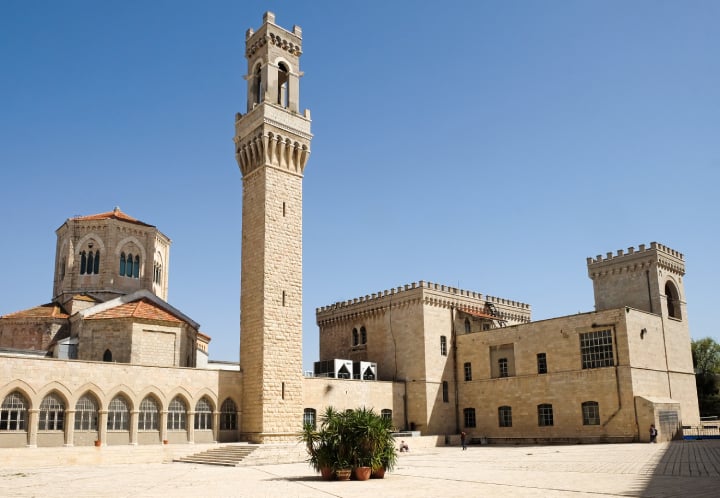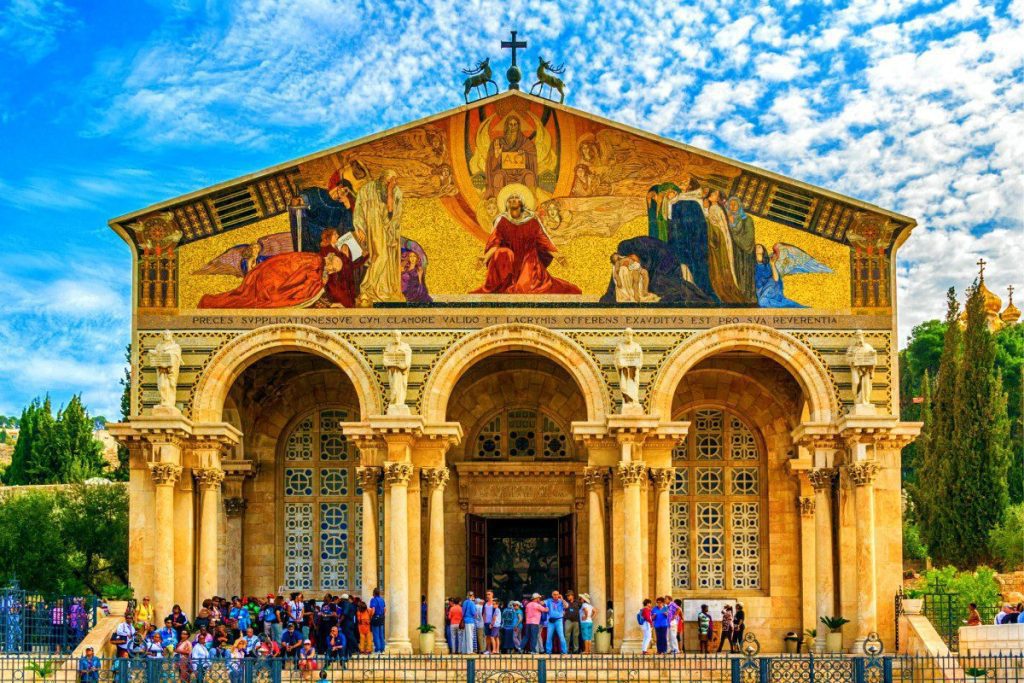The Italian Hospital in Jerusalem is a beautiful and historic building in the city’s west side. It was built between 1910 and 1919 by the Italian Barluzzi brothers, and it is considered one of the finest examples of Italian Gothic architecture in the Middle East.

The hospital was initially intended to serve as a medical facility for Italian pilgrims and tourists visiting the Holy Land. However, it was never used for this purpose, as Italy entered World War I in 1915. Instead, the Italian army used the hospital as a military hospital.
After the war, the hospital was turned over to the British Mandate authorities, who used it as a military hospital and a prison. In 1948, after the establishment of the State of Israel, the hospital was taken over by the Israeli government and used as a military hospital and a police training school.
In 1969, the hospital was closed, and its buildings were abandoned. However, in the 1990s, the Israeli government restored the hospital and turned it into a cultural center. The restoration work was completed in 2002, and the hospital is now home to several cultural institutions, including the Jerusalem Academy of Music and Dance, the Italian Cultural Center, and the Jerusalem Cinematheque.
The Italian Hospital is a beautiful and historic building that is worth visiting. It is a reminder of the rich history of Jerusalem and the important role that Italy has played in the city’s past.
Church of All Nations

Here Are Some Other Interesting Facts About The Italian Hospital:
- The hospital was designed by the Italian Barluzzi brothers, who also designed the Church of the Dormition and the Church of the Nativity in Bethlehem.
- The hospital was built in the Italian Gothic, characterized by its pointed arches, ribbed vaults, and stained glass windows.
- The hospital has a central courtyard that is surrounded by a colonnade.
- The hospital’s chapel is decorated with beautiful mosaics and stained glass windows.
- The hospital’s library contains a collection of books and manuscripts on the history of Jerusalem and the Holy Land.
The Italian Hospital is a fascinating place to visit. It is a beautiful building with a rich history, and it is a reminder of the important role that Italy has played in the city of Jerusalem.







